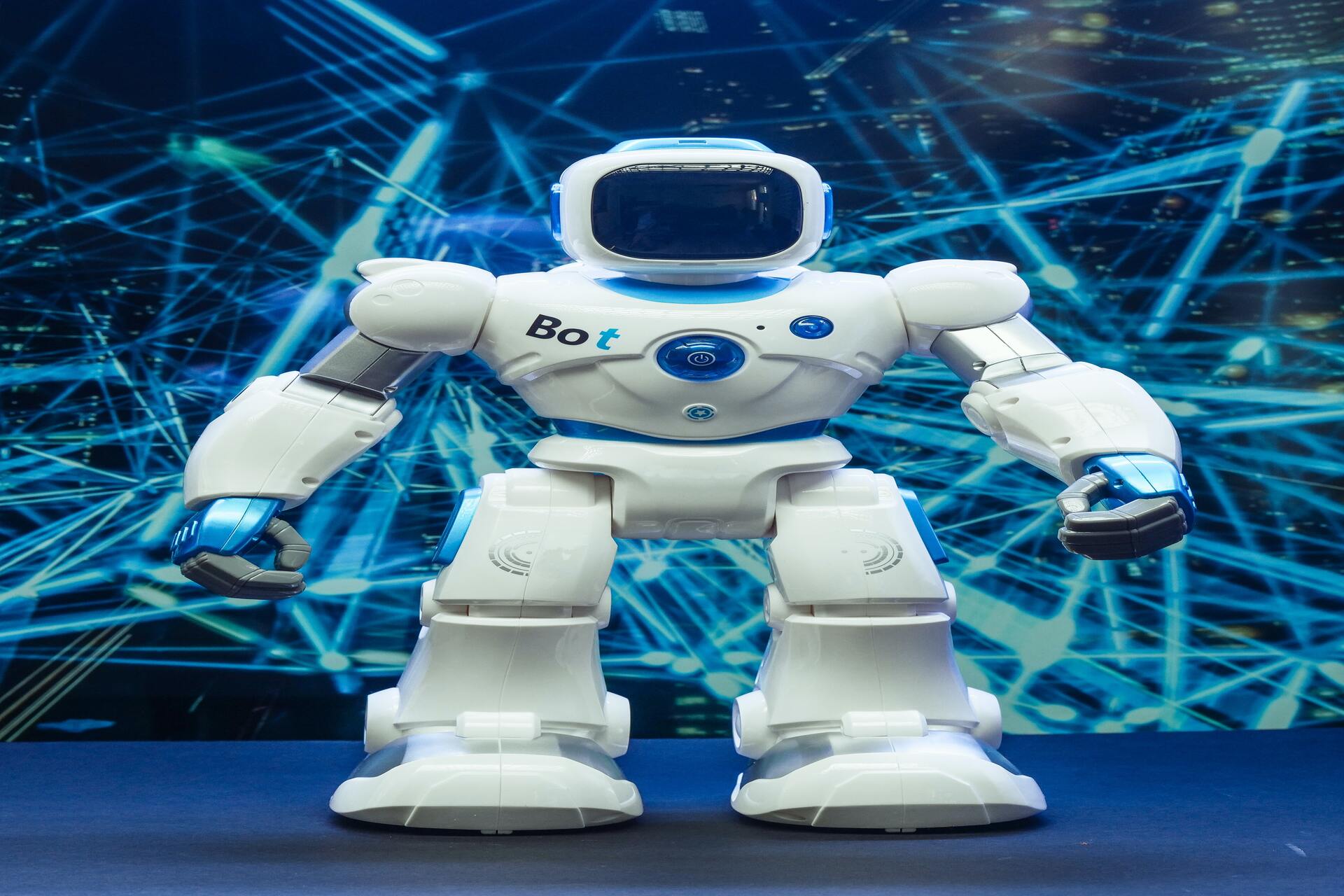
What Is Robotic Process Automation (RPA) and How Does it Work?
November 16, 2023 - Emily Newton
Revolutionized is reader-supported. When you buy through links on our site, we may earn an affiliate commission. Learn more here.
Robotic Process Automation (RPA) supplies businesses with exceptional benefits. It can help reduce employees’ workload and create more time for staff to utilize on other essential company processes.
It can play a massive role in how companies deal with daily operations. Learn how RPAs work and everything you should know about this automation system.
What Is Robotic Process Automation?
Robotic process automation — also referred to as software robotics — is an application designed to automate human tasks. Ironically, RPA has very little to do with robotics. Instead, the name refers to bots that complete specific laid-out objectives on digital systems.
There are many repetitive and mundane operations in a business environment that can benefit from automation, such as moving files and filling in forms. RPAs can easily handle these duties while reducing the staff’s workload. In addition to freeing up time for workers, it also decreases costs, increases productivity, minimizes human error and completes tasks faster.
The type of tasks RPAs automate is usually not complex and is typically mundane rule-based business duties. For example, filling in the same information several times but on different applications or documents.
That said, software robotics can become more intelligent and automate much more advanced operations through the help of other systems, such as artificial intelligence. RPAs are very beneficial to companies.
The reason for this is that it allows their workforce to focus on assignments requiring more critical thinking and creativity. Instead of letting skilled workers constantly do the same menial tasks that drain away their productivity levels. Here are a few areas where companies can use RPAs:
- Finances
- Retail
- Health care
- Accounting
- IT
- Human resources
- Telecom
How Does Software Robotics Work?
The way RPA bots work is they require someone to set them up. In other words, they need to know what actions to take and when. While this can require programming, in most cases, it does not.
Many of today’s robotic process automation tools have a drag-and-drop interface that typically has a lower learning curve. An RPA application usually consists of the following:
- Orchestrator: This is where all the robotic processes are handled. For example, scheduling and monitoring. It is the area used for overall control and management.
- Studio: The studio is the section where the business will create and set bots up. How complicated the configuration process of the bots is depends on the chosen RPA platform. Some might require advanced programming knowledge, whereas others could use a drag-and-drop system.
- The bots: This is the workforce that will perform all the tasks. They are designed to complete rule-based operations. As mentioned, the duties these bots perform are not that challenging, such as copy and pasting information on different systems.
Are RPAs and AI the Same?
Robotic process automation and artificial intelligence automation are often referred to interchangeably. However, they are not the same thing and work on different principles. While RPA might involve certain factors of artificial intelligence, it in itself is not an AI system.
In general, RPAs do not learn from data such as some AI systems — machine learning (ML) models — but instead are algorithms following rules to complete tasks. Whereas artificial intelligence resembles the cognitive ability of a human and uses ML to learn from data.
Think of it this way, artificial intelligence focuses on data where RPAs follow defined processes. RPAs can only perform the tasks laid out for them, but AI can use intelligent models to recognize patterns, which they can use to form conclusions or predictions.
AI is much more advanced and smarter than RPA systems. That said, technology is constantly evolving and so are the operations that businesses deal with. Today, basic RPA systems are no longer enough. Fortunately, both systems work well together.
Therefore, some RPAs can contain AI components such as computer vision and machine learning. These tools can automate much more complex and stringent tasks. They can complete processes a lot quicker and to a higher degree of efficiency.
The Advantages of Robotic Process Automation
RPAs can provide companies with several benefits:
- Saves time and increases employee morale: RPAs automate time-consuming and tedious tasks that people would typically perform daily. This frees up time for them to prioritize other vital business operations such as customer service or business development. Eliminating tedious duties from staff’s workload can increase productivity and enhance their mood.
- Reduces costs: With RPAs automating many tedious tasks, it reduces the need for humans to do them. Thus, costs decrease because companies do not have to hire and train new employees for those operations. Instead, they use RPAs to perform the duties for them.
- Higher efficiency and decreased human error: Human error always exists, especially if the tasks are tedious and time-consuming. RPAs are designed to follow rule-based operations, this drastically reduces or eliminates the chance of human error occurring. They can also complete duties quicker, which increases overall efficiency.
- Improves the customer experience: RPAs can use chatbots and work at any time. They can assist customers whenever they need to. This reduces the likelihood of clients needing to wait for service and improves their level of satisfaction.
- Does not require programming: Another great thing about RTA’s is that many of them do not require intense programming knowledge. This is because several of them use drag-and-drop systems designed to simplify the process. This makes RTA’s more accessible to companies and easier to use.
4 Tips For Incorporating RPA in Your Business
Here are four tips companies can use to help make the RPA implementation process easier:
1. Set Realistic Expectations
It is essential to set realistic expectations from the beginning of what is possible with RPAs. Sometimes, many headaches can arise when companies are unsure how robotic process automation can help them. Not effectively managing expectations can create issues that a company could have avoided if they performed proper research.
2. Work With the IT Department From the Beginning
Another common issue many companies encounter is not involving the IT department at all or quickly enough. Often, the business can face issues they could have easily side-stepped if they spoke with IT beforehand. Doing so will give companies a higher chance of everything running smoothly and reduce the likelihood of common pitfalls.
3. Consider the Areas Where RPAs Would Provide Benefit
RPAs can provide significant benefits to companies in more than one area. Organizations should clearly look at business operations to determine which parts would gain the most from RPAs. They don’t want to be a company with the necessary tools to streamline business operations but not use it in the areas where it would have the most impact.
4. Consider Who the RPAs Would Affect
The last tip is to remember the people the RPAs would affect. Sometimes, companies are so excited to implement the new technology that they forget to mention it to those affected.
Reducing an employee’s workload without talking to them beforehand can affect their work process and disrupt their entire day. It is better to first speak to them and HR so the necessary adjustments can be made for when the new system takes effect.
Robotic Process Automation Helping With Company Operations
For many companies and employees, RPAs are a game changer. They can help decrease staff’s workload, save time, automate tedious tasks and lower costs. With all the advantages RPAs offer, it is unsurprising to see many companies implement automation tools.
Revolutionized is reader-supported. When you buy through links on our site, we may earn an affiliate commission. Learn more here.
Author
Emily Newton
Emily Newton is a technology and industrial journalist and the Editor in Chief of Revolutionized. She manages the sites publishing schedule, SEO optimization and content strategy. Emily enjoys writing and researching articles about how technology is changing every industry. When she isn't working, Emily enjoys playing video games or curling up with a good book.







